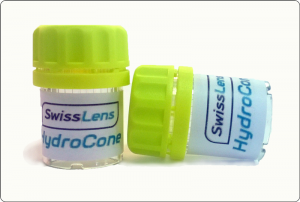The backsurface of the HydroMed can be fully customized to get a perfect fit after a Post Lasik, Post Graft or any other corneal and scleral irregularities. Due to its patented design, the oxygen supply and comfort is the same as with standard contact lenses.
PostSurgery Hydromed/Hydromed P

|
Post surgery |
Tekniske data:Total diameter: 12.00 -> 17.00 mm |









